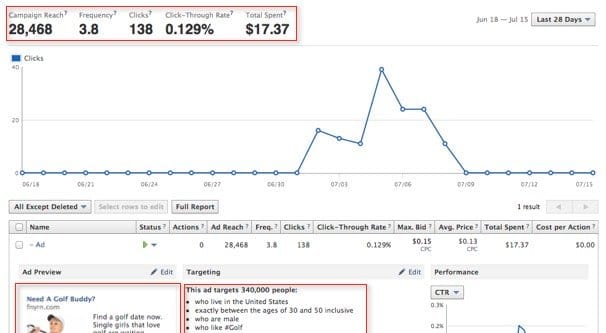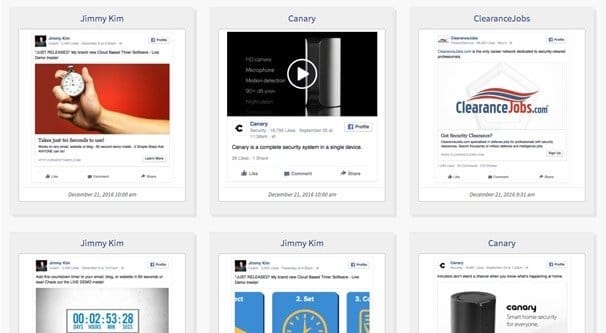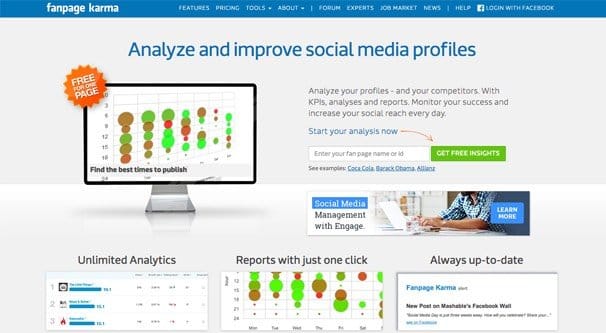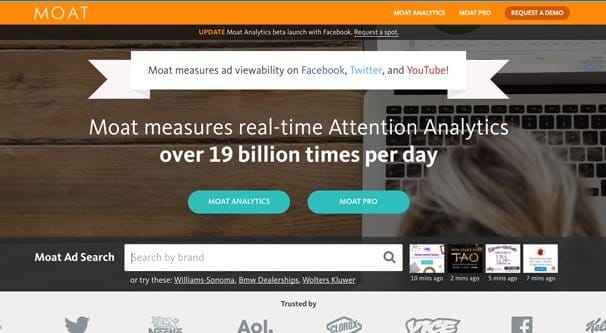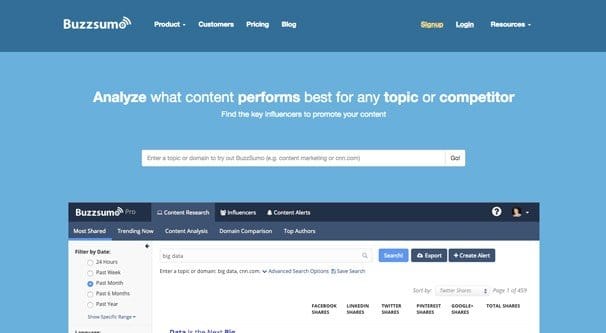 Written by ContentPowered.com
Written by ContentPowered.com
We’ve said it time and time again: Facebook ads are some of the most exceptionally powerful PPC ads in existence. Successful use of Facebook ads can make or break a business.
And yet, they’re complex enough to use that people think they’re a scam. People using them without knowing what they’re doing lose hundreds, thousands, or more every year. Facebook does what it can to help, but the system is complex enough that there’s no one-size-fits-all solution, and even the hints and tips come off as vague or incorrect.
It’s not like Facebook wants to scam you. Why would they take $100 in your money one month and drive you away, when they can take $25 in ad payments per month for years? There’s absolutely no incentive to lead you astray. It’s just that they’re far too big a company to assign individual ad managers to every brand looking to advertise. You have to go it alone.
Since you’re going to be struggling to find the right way to advertise on Facebook, you want to avoid worrying about as many factors as possible. The more you can lock down and understand, the more you’ll be able to succeed by playing with the unknowns in the equation.
One such factor is competition. You need to know what your competitors are doing, so you know how to undercut them, how to counteract them, and how to take advantage of holes in their coverage. When you know their every move, you know how to out-perform them. That’s where spying on your competitors’ ads comes into play.
Spy Trick #1: Straight From The Source
In movies, spies are often mired in risky situations, hiding around corners or up in vents listening to private conversations. As an ads spy, you don’t need to cram yourself in tight spaces just to find out what your competitors are doing. In fact, you can often simply just ask for the information, and Facebook will tell you.
There are a couple of techniques to do this. The first is to use a third party tool that creates hundreds of fake accounts, all of which browse in your interest categories until it they find ads posted by your competitors, and then record them. This is a terrible technique and isn’t worth mentioning again. The second technique is social engineering, which involves calling up Facebook, pretending to be your competitor, and asking about insider information. This is generally illegal and, while fun to read about, should not be used.
The second technique is the real technique. Simply use Facebook, looking for your competitors’ ads. When you see one, either in the news feed or in the sidebar, look for the interaction button. On sidebar ads, it’s the X in the corner. For news feed ads, it’s the V. Both bring up options like “report this ad” and “Why am I seeing this?” It’s that second option that you want to click.
When you click to see why you’re seeing an ad, you will see an indication of the audience targeting the advertiser is using, and which parts of it you fall under. For example, I might see that the ad targeting me is targeting young males with an interest in marketing.
Every ad you click this button for will show you some insight into the targeting of the person behind the ad. This is targeting information you can use for your own ads, under the assumption that if your competitors are targeting it, they’re probably on the right track.
Spy Trick #2: Case Study Capers
Maybe the idea of being a spy doesn’t appeal to you, or maybe you’ve recognized the one flaw in trick #1, which is you’re only going to get information relating to the demographics of the account you’re using. Why not look for some better information straight from the advertisers?
It’s pretty unlikely that you’ll be able to call up the ad manager working for your competition and ask them what they’re doing. Even if you know who it is, they’re probably not willing to share that information, since it would probably get them fired. However, you might be surprised at how much you can learn by looking at the company’s blog.
Many companies, particularly those in marketing, publish case studies. The easiest source of data for a case study is one’s own marketing. If your competitors publish a case study about their Facebook ad techniques, their success and their failure, well, who are you to turn it down? It’s free information.
Sure, some of the information might be out of date, but that’s fine. Facebook ads and demographics don’t change so rapidly that you can’t glean some valuable information.
It’s also possible that a case study about that company has been published on another blog. If a writer for the Huffington Post calls you up and asks for data for a case study post, are you going to turn down the exposure? Probably not! You can head to Google and plug in “Company Name Case Study” and other such variations. You might be surprised at the wealth of information that comes in.
Don’t think this is strictly limited to marketing companies, either. Many marketing agencies will publish case studies about their clients to showcase their success and draw in more clients. This is a source of excellent data.
Spy Trick #3: Free Admission to the Gallery
Case studies are excellent, but not every company allows their information to be published so readily. The data behind ads, their performance and their budgets, is private information. Many companies prefer not to reveal sensitive information, even if it can be guessed at, because they don’t want to reveal competitive intelligence. However, the ads themselves are public, and there’s no good way for a company to keep them private while still making them successful.
What you can do, then, is look for advertising galleries. Galleries can be found in two categories; success lists and resource lists.
Success lists are blog posts titled “The 10 best ads we’ve seen in 2016” and other such posts. This post on WordStream is a great example. You’ll find lists of great ads curated by various marketers, and ideally you’ll find information you can use, either directly from competitors or more generally from your industry.
Resource lists are like the AdEspresso Ads Gallery AdEspresso is one of the top Facebook ad management companies, and their tools are great, but we’re not here to use them directly. What you can do is search their ads gallery for companies, for ad placements, for industries, for objectives, and more. The ads that display will be a selection of great ad examples you can learn from. As of this writing, the AdEspresso gallery has over 22,000 ads categorized for you to search through. It’s also free to search and use. There are other galleries as well.
Spy Trick #4: President of the Fan Club
Another way to get information from your competitors is to get them to send it right to you. Use a personal account or a dummy account in their core demographics, and take a few steps to become a fan.
- Like their Facebook page and a few of their posts.
- Sign up for their email mailing list with a real email address, and make sure to open their messages and click the occasional link.
- Click on their ads and visit their landing pages to see how they look and how they jive with the ad itself.
- If they’re a storefront with a cart system, add something to the cart and abandon it.
You might need to tell a few lies to get the best information out of them. For example, if you have to fill out a form about your role and your company when you sign up for their mailing list, don’t tell them you’re a competitor or a marketer; those are filters to exclude people like you. Likewise, if you’re outside of the typical demographics – like you’re a man trying to investigate a women’s lingerie company – you might need to make a fake Facebook profile to investigate.
This will give you a lot of information about their ad campaigns, but in particular it will help you figure out if they’re using site cookies and retargeting, and what sort of techniques they’re using to capture retargeted users.
Spy Trick #5: Take Advantage of Karma
Fanpage Karma is a tool you can use to get quite a bit of information about your competitors and their social presence. You can see good statistics about their posts per day, their daily reach, and their post engagement. Any post you see that they make with above average reach is likely to be a post they’ve boosted or made into an ad, so you can study it to see why they’ve decided to invest in it.
The tool also shows you some good comparative numbers in terms of fan page size, growth rates, engagement rates, and interactions. Unfortunately, to get the most of the data from Fanpage Karma, you’ll have to pay for an account. The competitor VS tool is free, but a lot of the analytics and monitoring will cost you. The standard monitoring suite is $15 per month, and the standard analytics suite is $70, with both tools having more expensive fully featured plans available.
Spy Trick #6: Delegate
You can’t do everything yourself. Spies in film are always the lone wolves with little more than financial backing from their company or government, but you have to do a lot more with a lot less funding. Rather than try to reverse-engineer a lot of data about your competitors, you can let someone else do it. There are, after all, dozens of companies that specialize in competitive intelligence, and they often have whole suites of tools, employees with experience and training, and resources you won’t be able to access without the right relationships.
Moat is a tool designed to show you the PPC ads run on Facebook, Twitter, and YouTube when you search for a specific brand name. The basic functionality is free, but they have a pro analytics version with more detail, including mobile ads, video intelligence, full page captures for ad context, and mock-ups. It’s expensive enough to not list pricing, though.
SimilarWeb is another similar tool, though it searches the web and app marketplaces for advertising in addition to just social media advertising. Their pro version has industry analytics as a whole, engagement metrics, audience interest recording, and a lot more as well.
Generally these sorts of apps will be estimating rather than using specific data, so take actual numbers the quote with a grain of salt. They will generally inflate numbers when it comes to direct purchase ads, and will underestimate the budget spent on network ads, due to how they’re able to monitor and estimate expenses and exposure. Comparing two numbers that are relatively close is a fool’s game. Just use it for broad comparisons.
Spy Trick #7: The Whole Shebang
Buzzsumo is the tool of the day here, because it will allow you to plug in a site name and see a ton of information about the content strategy used by that site. You’ll see their best publications, their social performance, tends, backlinks, and a heck of a lot more. There’s also a ton of information hidden behind a paid account, but if you’re going to buy one single tool in this entire article, it should be this one. Seriously, it’s worth it.
Why pay attention to blog posts and publications? Content strategy is as much a part of marketing as paid advertising. Most paid ads on Facebook don’t point at landing pages, they point at CTA-laced organic content on a blog. By keeping content in the picture, you get a good idea of how your competitors marry paid and organic marketing, and what their content strategy is designed to accomplish.

